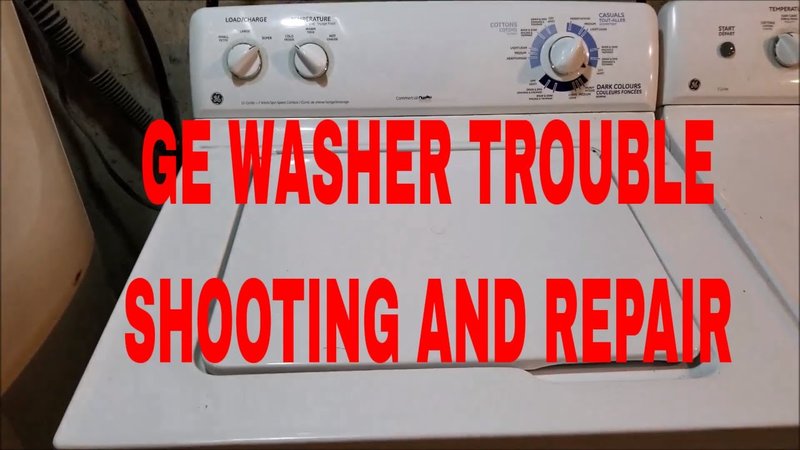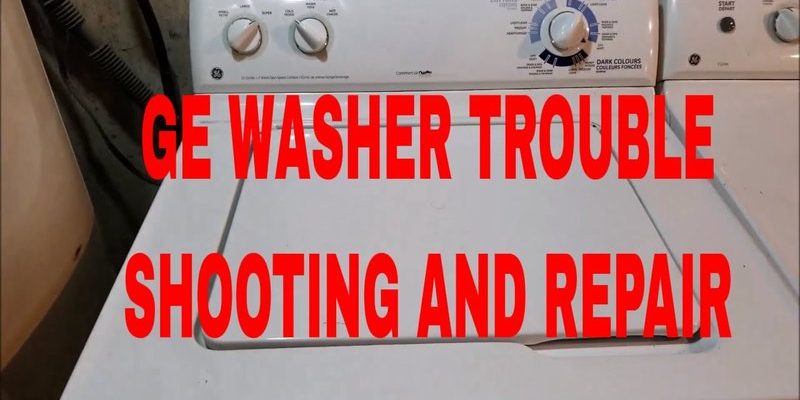
When it comes to washing machines, error codes are like silent cries for help, pinpointing something amiss within the system. The “OE” error code on your GE washing machine is no exception. It signals a draining issue, which means the machine isn’t able to get rid of the water as it should. Leaving this problem unresolved can lead to more headaches than you might think. By the end of this article, you’ll have a clear picture of what happens if you don’t address this pesky problem and why it’s crucial to take action sooner rather than later.
Understanding the OE Error Code
So, what exactly is the “OE” error code? Think of it like a check engine light in your car — it’s an alert indicating something isn’t operating correctly. In simple terms, the “OE” code means your GE washing machine is having trouble with draining water. This could be due to issues like a clogged drain hose, a problematic pump, or even an obstructed filter.
When the machine can’t drain water efficiently, it’s akin to trying to empty a bathtub with a teaspoon. This issue can be frustrating but is relatively common in washing machines. The critical thing to remember is that water left sitting in the machine can lead to more severe problems. Ignoring the “OE” error is much like ignoring a slow leak in a pipe; it might not seem like a big deal at first, but it can quickly escalate.
You might be tempted to just restart the machine and hope it resolves itself—many of us have been there. However, repeatedly running the machine without addressing the root cause can cause more wear and tear on its internal components. Over time, this can evolve from a minor inconvenience into a costly repair job.
Consequences of Ignoring the OE Error Code
Now, you might be asking, “What’s the worst that could happen if I don’t fix it?” Let’s break it down. When the “OE” error isn’t addressed, the first issue you’ll likely encounter is water stagnation. Water left standing in your machine can lead to unpleasant odors, similar to leaving damp laundry in a basket for too long.
Furthermore, stagnant water can become a breeding ground for mold and mildew. This is not just unpleasant but also unhealthy, especially if anyone in your home has allergies or respiratory issues. It’s like leaving your refrigerator door slightly open—things can spoil faster, and you’ll end up with a bigger mess.
Beyond the immediate concerns of smells and health hazards, ignoring this error can result in damage to the pump or motor. If the pump keeps trying to work with a blockage, it’s much like a car engine revving too high; it can overheat and fail. Such failures can lead to expensive repairs or even the need to replace the machine altogether. It’s clear that addressing the OE error promptly can save you a significant amount of trouble and money.
How to Fix the OE Error Code
So, what’s the plan of action if you encounter the “OE” error code? Don’t fret—it’s manageable with a bit of patience and elbow grease. First, unplug the machine to ensure safety. You wouldn’t want to dive into machine repair with the power flowing, right?
Start by checking the drain hose. Imagine it’s like a garden hose—any kinks or clogs can prevent proper water flow. Ensure it’s not bent and examine it for obstructions. Next, move on to the pump filter. Most washing machines have an accessible filter to catch any foreign objects, much like a lint filter in a dryer. Clean out any debris or lint that may have accumulated over time.
If these steps don’t resolve the issue, the problem could be more internal, such as the pump itself needing attention. While some might find this daunting, don’t hesitate to contact a professional if you’re not comfortable proceeding. It’s better to call in an expert than to risk further damage.
Preventing Future OE Errors
Prevention is always better than cure — you’ve probably heard it a million times, but it rings true for washing machines as well. To avoid the “OE” error popping up again, regular maintenance is your best friend. Make it a habit to check and clean the drain hose and pump filter periodically. Think of it as spring cleaning for your machine, ensuring it keeps running smoothly.
Avoid overloading your machine, as too many clothes can strain the system, much like stuffing a suitcase until it bursts. Overloading not only makes draining difficult but can also result in poor washing performance. Additionally, be mindful of what you’re washing. Items like coins, loose threads, or small fabric pieces can find their way into the machine’s nooks and crannies, potentially causing blockages.
Lastly, consider running an empty cycle with hot water and vinegar occasionally to help break down any potential build-up inside the machine. This simple step acts as a detox, much like a good cleansing routine for your skin.
In conclusion, while the “OE” error might seem minor, it can lead to significant issues if left unchecked. By understanding its implications and taking proactive steps, you can ensure your GE washing machine runs efficiently for years to come. After all, a well-functioning washing machine makes life a whole lot easier.
